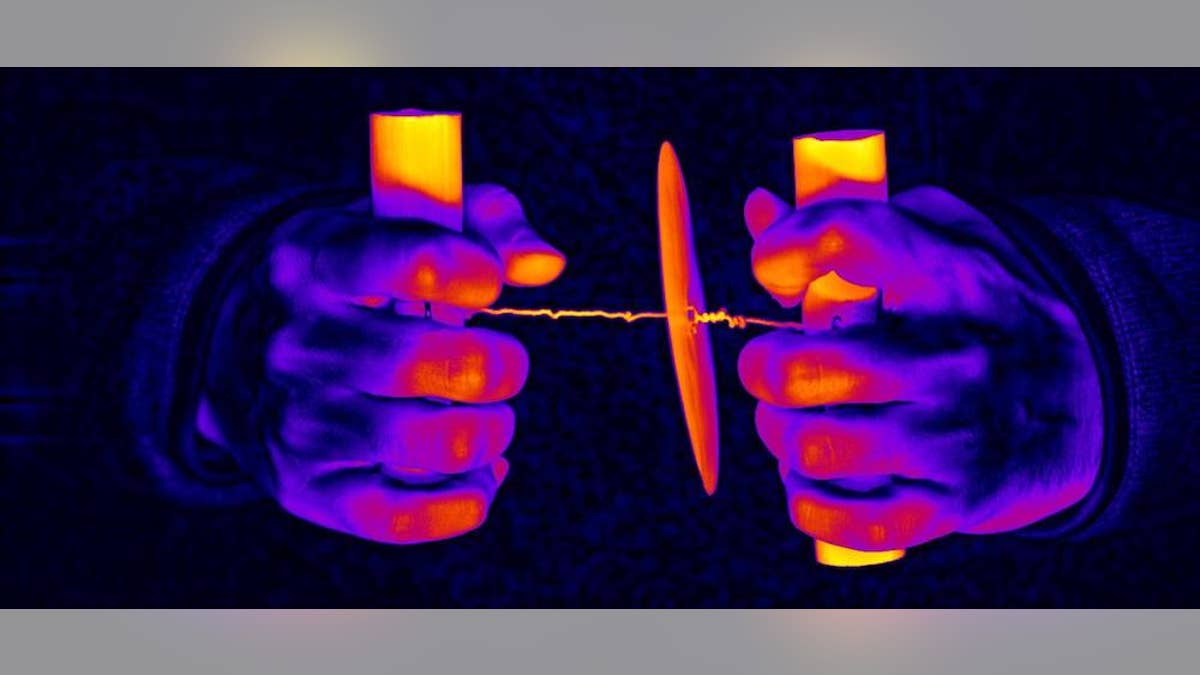
Modern medicine often feels like magic: A technician pricks your skin, draws a drop of blood and whisks it away into another room. Oftentimes, this gives the doctor enough information to make a diagnosis and prescribe a treatment. But for people in developing countries, these kinds of diagnostics can be more science fiction than reality.
Modern medicine relies heavily on technology , like centrifuges, that are costly, bulky and require electricity. In many places around the world, this kind of equipment can be hard to come by. But in a new study published online today (Jan. 10) in the journal Nature Biomedical Engineering , researchers described an inexpensive, hand-powered centrifuge that's based on an ancient toy and could help doctors working in developing countries.
The centrifuge is the workhorse of modern medical laboratories. The device spins samples at high speeds to separate particles or cells based on size and density, effectively concentrating specific components. Most diagnostics "are like looking for a needle in a haystack," said Manu Prakash, lead researcher on the new study and an assistant professor of bioengineering at Stanford University. A centrifuge, Prakash said, puts all the needles in one place, making them easier to find. [ 10 Technologies That Will Transform Your Life ]
Unfortunately, even the simplest modern centrifuges are burdensome for doctors in the field. Prakash, who won a 2016 MacArthur "genius" award, is a leader in the so-called frugal science movement, which aims to devise low-cost solutions for complex technologies. Prakash is best known for developing the Foldscope, an origami-like paper microscope that costs about $1.50.
More From LiveScience
In the past, researchers explored common household items, such as egg beaters and salad spinners, as alternatives to the centrifuge, but these devices gave poorer results than modern diagnostic tests. A simple blood test using these tools required more than 10 minutes to separate cells, compared with 2 minutes for commercial centrifuges. So instead of using these items, Prakash and his colleagues focused on spinning toys.
"We tested many toys, like the top and yo-yo," study lead author M. Saad Bhamla, a postdoctoral researcher at Stanford University, told Live Science. "We wanted to find the most effective way of converting physical energy into rotational energy."
The researchers found that a toy known most commonly as the whirligig had the greatest potential as a centrifuge. By tweaking the basic design, they were able to achieve speeds of up to 125,000 revolutions per minute (RPM), the fastest speeds reported for a hand-powered device, the researchers said. (They have submitted an application to the Guinness World Records , they wrote.)
Also known as a button spinner, buzzer or spinning disk, the whirligig is one of the most ancient toys and can be found all over the world. It is a simplistic child's toy, with a button or disk threaded through two strings that are affixed to handles. A child begins by winding the strings and then pulling on the handles to make the threads unwind and the button spin. Pulling and relaxing the strings repeatedly makes the button spin faster. [ The Cool Physics of 7 Classic Toys ]
Using a paper disk and fishing wire, the researchers modified the whirligig, turning it into a hand-powered centrifuge that costs about 20 cents to make. They called their device a "paperfuge" and tested it against modern centrifuges to measure red blood cell counts. To do so, Prakash and his team loaded a finger prick of blood into a capillary tube and placed that into a sealed plastic straw that was mounted onto the paper disk.
"With a conventional centrifuge, the [blood test] will take about 2 minutes and that [centrifuge] will cost about $1,000," Bhamla said. "And in a minute and a half, we can achieve the exact same result — at a cost of $0.20 without electricity." The researchers' results were similar in tests for malaria parasites .
To better understand how the paperfuge works and how to optimize it for different types of diagnostics, Prakash and his colleagues generated a mathematical model for the movement of the disk.
"It is quite an unconventional centrifuge," Prakash said. "It's an oscillatory centrifuge, so it flips direction." Most centrifuges spin in only one direction but the paperfuge reverses during its spin, which may limit the volume of liquid that it can separate, he added.
Prakash and Bhamla also found that the toy is essentially self-winding. The spinning disk has inertia that causes the strings to twist. When a person adds force by pulling on the handles, the strings become supercoiled, with twists looping back on themselves, Prakash said. "These supertwists give torque and result in twisting of the disk," he said. "It is amazing how little force it takes."
Prakash and his team are now taking the paperfuge out into the field. "Our current work has put about 100 paperfuges into the hands of clinical partners and health care workers in Madagascar," Prakash said, "in the front line of developing countries where almost nothing is available."
At the same time, the researchers are testing other versions of the paperfuge, using 3D-printed plastics and different designs in hopes of applying the technology to other diagnostic tests, Prakash said.
Original article on Live Science .
